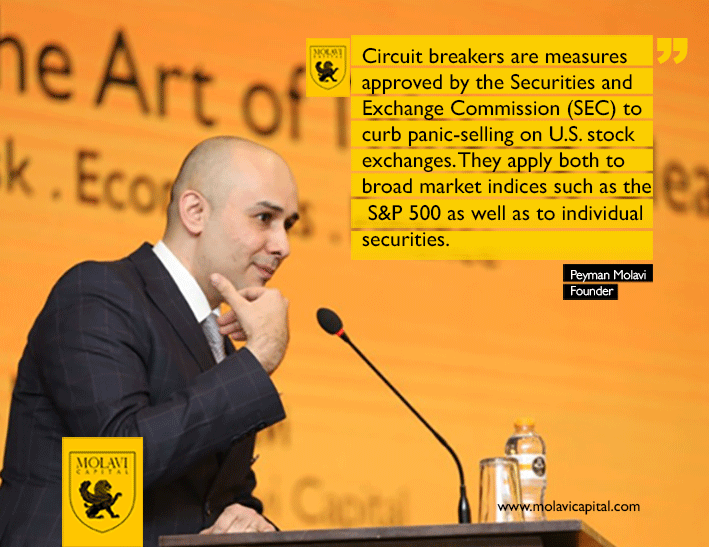
Circuit Breaker useful instruments to the markets
What Are Circuit Breakers?
Circuit breakers are measures approved by the Securities and Exchange Commission (SEC) to curb panic-selling on U.S. stock exchanges. They apply both to broad market indices such as the S&P 500 as well as to individual securities.
Circuit breakers function by temporarily halting trading when prices hit predefined levels, such as a 13% intraday drop for the S&P 500.
KEY TAKEAWAYS
- Circuit breakers are measures used to curb panic-selling on U.S. stock exchanges.
- They temporarily halt trading if prices rapidly move outside of pre-determined bounds.
- The system of circuit breakers has been revised several times based on feedback from past crises.
How Circuit Breakers Work
Regulators put the first circuit breakers in place following the market crash of October 19th 1987, when the Dow Jones Industrial Average (DJIA) shed 508 points (22.6%) in a single day. The crash, which began in Hong Kong and soon affected markets worldwide, came to be known as Black Monday.
A second incident, the so-called flash crash of May 6th 2010, saw the DJIA drop almost 1,000 points (over 9%) in just ten minutes. Prices mostly recovered by market close, but the failure of the post-1987 circuit breakers to halt the crash caused the regulators to update the circuit breaker system.
Today, the circuit breaker system applies to both individual securities and market indices. For example, since February 2013 we have had market-wide circuit breakers which respond to single-day declines in the S&P 500 index. If the index falls by 7% below its previous close, this is known as a Level 1 decline. A Level 2 decline refers to a drop of 13%, whereas a Level 3 decline refers to a drop of 20%.
On March 9, 2020, circuit breakers were triggered at the NYSE as the DJIA fell 7% at the open, following a 30% selloff in crude oil prices.
For individual securities, circuit breakers can be triggered regardless of whether the price is increasing or decreasing. By contrast, circuit breakers that relate to broad market indices are only triggered based on downward price movements.
Level 1 or 2 circuit breakers halt trading on all exchanges for 15 minutes, unless they are triggered at or after 3:25 PM, in which case trading is allowed to continue. Level 3 circuit breakers halt trading for the remainder of the trading day (9:30 AM to 4:00 PM).
In addition to these market-level circuit breakers, there are also circuit breakers for individual securities. Unlike their market-wide counterparts, these individual circuit breakers go into effect whether the price moves up or down.
Importantly, exchange-traded funds (ETFs) are treated as an “individual security” under the circuit breaker system, even though they represent portfolios of several securities.
Real World Example of Circuit Breakers in Action
Since October 2013, the SEC has used a “limit-up limit-down” (LULD) mechanism to determine the thresholds for acceptable trading. In this framework, halts are triggered by up-or-down moves outside of certain bands, determined based on the security’s price and listing.
